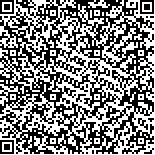| 本文已被:浏览 3459次 下载 3120次 |

码上扫一扫! |
|
|
| 棕点石斑鱼(Epinephelus fuscoguttatus♀)×鞍带石斑鱼(Epinephelus lanceolatus♂)F1染色体制备方法及核型分析 |
|
刘 莉1,2, 张 岩2, 陈 超2, 李炎璐2, 孔祥迪1,2, 于欢欢1,2, 陈建国1,2, 翟介明3
|
|
1.上海海洋大学水产与生命学院 上海 201306;2.农业部海洋渔业可持续发展重点实验室 中国水产科学研究院黄海水产研究所 青岛 266071;3.莱州明波水产有限公司 烟台 261418
|
|
| 摘要: |
| 探索了在鱼类大小规格不同情况下制备鱼类染色体的最佳策略和方法,并对棕点石斑鱼(Epinephelus fuscoguttatus♀)×鞍带石斑鱼(Epinephelus lanceolatus♂)杂交子代(俗称珍珠龙胆)的染色体核型进行研究。本研究根据预实验的结果,对所选取的珍珠龙胆幼鱼,采用小鱼游泳法进行前处理,取其鳍条并以冷、热两种不同的滴片方法制备染色体,观察染色体形态并对其染色体核型进行分析。结果显示,选用的染色体制备方法能获得图像清晰、形态良好的细胞分裂相;不同的滴片处理方法细胞分裂指数存在一定差异,即热滴片法的有丝分裂指数为2.58%,明显高于冷滴片法的有丝分裂指数(0.83%),此外,热滴片法所获得的染色体的质量也明显优于冷滴片法。珍珠龙胆石斑鱼二倍体染色体数为48,22对染色体为端部着丝粒染色体,2对染色体为亚端部着丝粒染色体,其染色体臂数(NF)为52,核型公式为2n=48,4st+44t。珍珠龙胆与父本鞍带石斑鱼的染色体数目、核型基本一致,而与母本棕点石斑鱼的核型存在很大差异。研究表明,珍珠龙胆的2n数与其亲本相同,其核型特点符合典型的高位类群鱼类核型特征。在对珍珠龙胆与其亲本的核型进行比较的同时,对已报道的25种石斑鱼进行了核型的比较和综合分析,为石斑鱼的种质鉴定、遗传资源保护利用、育种提供基础资料和理论依据。 |
| 关键词: 棕点石斑鱼(♀)×鞍带石斑鱼(♂) 染色体制备 核型分析 |
| DOI:10.11758/yykxjz.20141231001 |
| 分类号: |
| 基金项目:科技部国际合作项目(2012DFA30360)和农业重点择优委托科技攻关2012C10021共同资助 |
|
| Preparation of Chromosomes and Analysis of Karyotypes of Hybrid F1 (Epinephelus fuscoguttatus♀×Epinephelus lanceolatus♂) Groupers |
|
LIU L1,2, ZHANG Yan2, CHEN Chao2, LI Yanlu2, KONG Xiangdi1,2, YU Huanhuan1,2, CHEN Jianguo1,2, ZHAI Jieming3
|
|
1.College of Fisheries and Science, Shanghai Ocean University, Shanghai 201306;2.Key Laboratory of Sustainable Development of Marine Fisheries, Ministry of Agriculture, Yellow Sea Fisheries Research Institute, Chinese Academy of Fishery Sciences, Qingdao 266071;3.Laizhou Mingbo Aquatic Co. Ltd, Yantai 261418
|
| Abstract: |
| In this study we optimized the methods for preparing the chromosomes of fish in different sizes and analyzed the karyotypes of the chromosomes of hybrid F1 groupers (Epinephelus fuscoguttatus♀ × Epinephelus lanceolatus ♂). Juveniles of hybrid F1 groupers were pre-treated with small fish swimming method premised on the results of pre-experiments. Then we collected the fins of hybrid F1 groupers to extract the chromosomes using different drop processing methods. The morphology and karyotypes of the chromosomes were observed and analyzed under the microscopes. We obtained clear images of the chromosomes with selected measures and their mitotic indices were different. The hot air drying method generated higher-quality chromosomes than the cold air drying method. Moreover, the mitotic index after hot air drying treatment was 2.58%, which was significantly higher than the cold air drying method (0.83%). It was found that there were 44 telocentric chromosomes and 4 subtelocentric chromosomes in the diploid, and that the karyotypic formula was 2n=48, 4st+44t, and NF=52. The chromosome number and karyotype of the hybrid F1 groupers were similar to their fraternal parent, while the karyotype was great different from their maternal parent. These results demonstrated that the chromosome number of hybrid F1 groupers was the same as their parents’, and the karyotypes showed a typical pattern of the higher group of fish evolution taxonomy. Furthermore, we also compared the karyotypes of the related 25 species of groupers. Our study will provide scientific guidance for the germplasm identification, genetic resources protection and breeding of the groupers |
| Key words: Epinephelus fuscoguttatus♀×Epinephelus lanceolatus♂ Chromosome preparation Karyotype analysis |